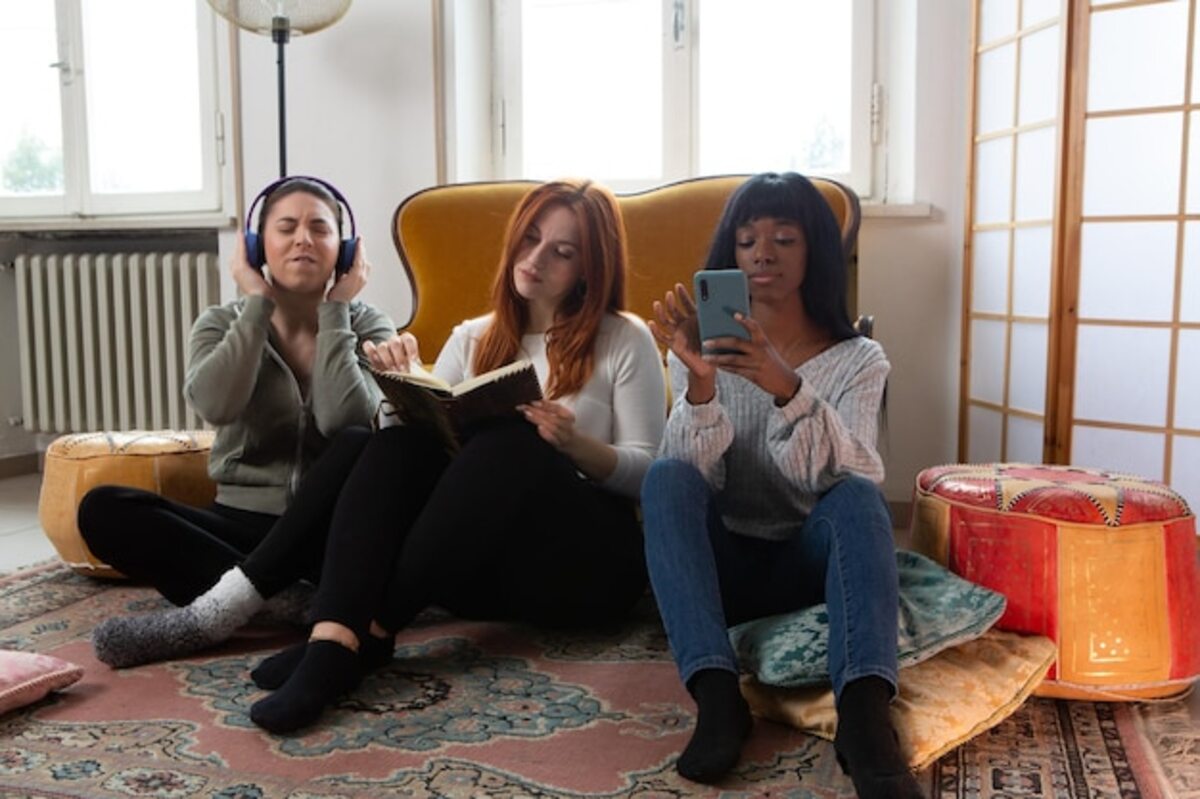Create a home that celebrates family and cultural diversity.

Create a home that celebrates family and cultural diversity. In a world where families are increasingly diverse, it is essential to reflect that richness in our spaces. A home that embraces different traditions, customs, and ways of life not only enriches our environment but also fosters a sense of belonging and respect for plurality. Discover how you can transform your dwelling into an inclusive refuge that celebrates diversity and makes everyone feel at home.
The importance of diversity at home
Diversity at home is a reflection of the complexity and beauty of our communities. By integrating different cultures, traditions, and perspectives into our family environment, we not only enrich our daily experience but also teach future generations the importance of empathy and respect for others. Every decorative element, every shared recipe, and every unique celebration become opportunities to learn and grow together, creating an atmosphere where everyone feels valued and included. This variety not only beautifies our home but also fosters a sense of unity amidst differences.
By celebrating diversity within our spaces, we contribute to building a more just and inclusive society. Homes that embrace different cultural identities and personal histories serve as positive role models for the surrounding community. Promoting diversity at home means opening the doors to meaningful conversations about identity, history, and values, which can be especially beneficial for children. By educating them about the various realities of the world around them from an early age, we provide them with essential tools to become respectful and aware global citizens. In this way, we cultivate a home where every voice matters and every story counts.
2. Decorative elements that represent diverse cultures
Decorative elements are a powerful way to integrate cultural diversity into the home. From colorful Persian rugs to delicate Mexican ceramics, each object tells a unique story and adds a special touch to your space. By choosing decorations that represent different cultures, you can create a cozy and vibrant atmosphere that invites your loved ones to share their traditions and experiences. Incorporating artworks from local artists or artisans of diverse heritages not only beautifies your home but also supports the creative communities that enrich our lives with their cultural legacy.
Additionally, the mix of styles and patterns from different parts of the world can create a unique and inspiring interior design. Think about combining cushions with African prints with Scandinavian-style furniture, or using textiles from Latin American countries to enhance the warmth of the space. This fusion not only reflects cultural plurality but also allows each family to find elements with which they identify. Thus, every corner of your home becomes a tribute to family diversity, creating an environment where everyone can feel valued and represented.
3. Functional spaces for multigenerational families
Functional spaces are essential for multigenerational families, where different ages and lifestyles coexist. When designing a home that celebrates family diversity, it is crucial to consider areas that encourage interaction and mutual support. For example, a spacious and cozy living room can serve as the heart of the home, allowing grandparents to tell stories to the younger ones while enjoying moments together. Incorporating integrated play areas or reading nooks also helps create an inclusive environment where each member feels valued and can participate in shared activities.
It is also vital to think about accessibility and comfort when planning these spaces. Including features such as ramps or wide hallways will facilitate movement for everyone, especially for those with reduced mobility. Additionally, having multiple functional bathrooms and kitchens can relieve tensions during peak hours of the day, allowing each generation to feel comfortable and respected in their daily routines. The key is to create a harmonious design that not only respects cultural and generational differences but also enhances collaboration and understanding among all its members.
4. Incorporation of family traditions in decoration
Incorporating family traditions into decor is a powerful way to honor our roots while enriching our home with stories and meanings. Each object, from a handwoven rug to a piece of pottery that has been passed down through generations, can tell the story of who we are. By integrating these elements into interior design, we not only beautify our spaces but also create an environment that reflects our cultural identity. This approach invites families to share their traditions, fostering intergenerational dialogue that strengthens family bonds.
Additionally, you can choose to mix styles and colors that represent the diverse cultures present in your home. For example, combining African textiles with Scandinavian furniture or incorporating Latin American art alongside Asian ceramics can create a surprising and cozy visual effect. This type of mix not only makes each corner unique and personal, but also promotes an inclusive environment where everyone feels valued. Making space for these traditions within the decor is an active celebration of family diversity that invites each member of the household to feel acknowledged and appreciated.
5. Creating intercultural coexistence zones
Creating intercultural coexistence areas in your home is an effective way to foster understanding and connection between different cultures. These areas can be designated spaces for shared activities, such as a cozy living room where families can gather and share stories, culinary traditions, or typical games from their respective cultures. Incorporating decorative elements that represent diverse cultural heritages, such as textiles, art, or traditional utensils, not only beautifies the space but also encourages members to discuss their origins and experiences. By creating these meeting points, an environment where curiosity and respect for diversity can thrive can be cultivated.
Additionally, it is important to consider the functionality of these areas when designing them. For example, you can integrate an open kitchen that facilitates the joint preparation of typical dishes from each culture during family celebrations. This approach not only promotes collaboration in the kitchen but also allows all members to experience unique flavors and culinary techniques. Likewise, including comfortable seating around a large table can encourage deep conversations and memorable moments between generations. In this way, not only is a more inclusive home created, but a legacy is established where each person feels valued and heard in their cultural identity.
6. How to choose colors and textures that reflect diversity
When choosing colors and textures that reflect diversity, it is important to consider the palette of tones that resonates with the different cultures and traditions present in your home. Opting for vibrant colors like turquoise blue, terracotta red, or mustard yellow can evoke feelings of joy and belonging, while softer tones like beige or gray can serve as an excellent backdrop to highlight cultural decorative elements. Additionally, each color has its own symbolism in various cultures; for example, green is associated with nature and fertility in many traditions. Therefore, selecting a varied range of colors not only beautifies your space but also tells a story about your family's rich cultural heritage.
Textures are another key element to celebrate diversity at home. Incorporating materials and finishes that represent different cultures can transform an ordinary environment into an extraordinary one. For example, you can use handmade rugs from indigenous communities or embroidered cushions in the Mexican style to add warmth and character. The mix of textures—from rough surfaces to soft fabrics—not only creates an appealing visual contrast but also invites touch and fosters family interaction. By integrating these elements into your daily decor, you make the cultural richness that resides in your home visible, creating a space where every member feels valued and represented.
7. Family celebrations: integrating cultural festivities
Family celebrations are a perfect opportunity to integrate cultural festivities into the home and strengthen the bonds among its members. By adopting traditions from different cultures, not only do we expand the horizon of experiences we share, but we also foster an environment of respect and appreciation for diversity. For example, you can organize themed dinners where each family member shares typical recipes from their culture or celebrate festivals from different parts of the world, from Día de Muertos to Diwali. These practices not only enrich our meals and celebrations but also teach the younger ones about the importance of valuing and understanding differences.
By incorporating decorative and symbolic elements related to various cultural festivities in your home, you can create a space that reflects that diversity. Decorations can range from traditional ornaments during specific festivities to family art that represents the cultural roots of each member. Creating a family calendar with all the festivities to be celebrated can be an excellent way to involve everyone in the planning and preparation, thus turning each celebration into a special occasion to share stories and learn from one another. In this way, your home becomes a true cultural melting pot where each celebration is an opportunity to strengthen family bonds and build unforgettable memories.
8. Community resources to enrich your diverse home
To enrich your diverse home, it is essential to take advantage of the community resources around you. Local libraries, for example, often offer a wide variety of books and materials in different languages and about various cultures. Participating in workshops and activities organized by community centers can be an excellent way to learn about the traditions of other cultural groups, as well as to share your own. These spaces not only promote learning but also create opportunities to establish meaningful connections with people from different backgrounds.
Additionally, many communities celebrate festivals and cultural events throughout the year that offer a rich experiential journey. Attending food fairs, art exhibitions, or musical performances will allow you to immerse yourself in the cultural diversity of your surroundings and bring a piece of that richness into your home. You can also get involved in local groups or associations that promote cultural integration, where you can exchange ideas and resources with other members interested in creating inclusive homes. By incorporating these community resources into your daily life, you not only enrich your home but also contribute to building a more cohesive and respectful community towards diversity.



